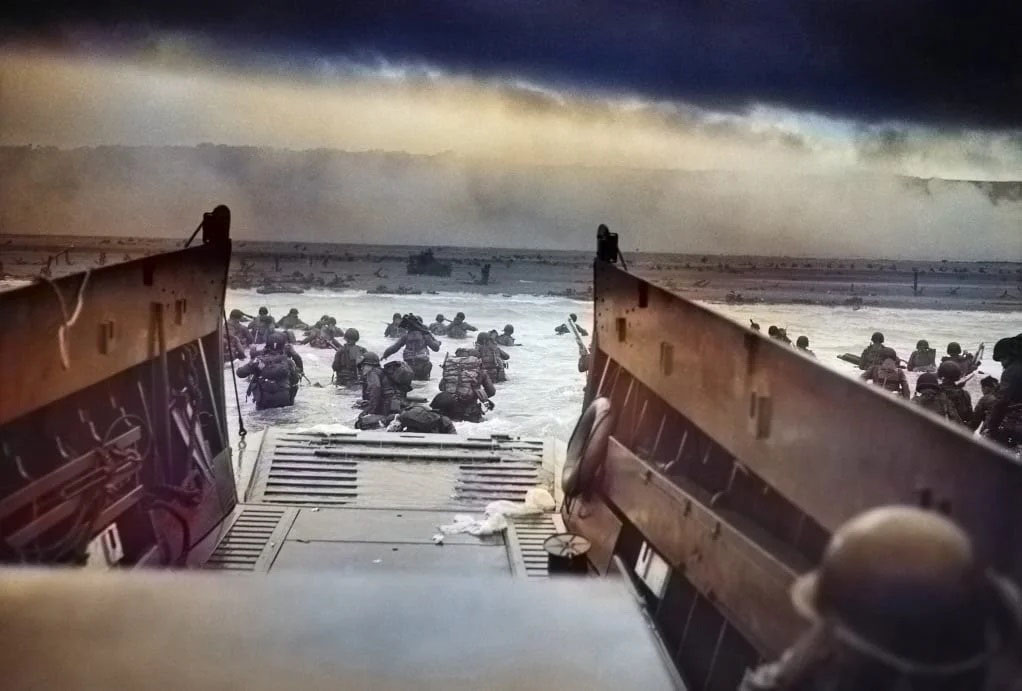by WorldTribune Staff, June 6, 2021
The Battle of Normandy, also known as D-Day, began on June 6, 1944 and lasted to August 1944. It resulted in the Allied liberation of Western Europe from Nazi Germany’s control.
Codenamed Operation Overlord, the battle included some 156,000 American, British and Canadian forces who landed on five beaches along a 50-mile stretch of the heavily fortified coast of France’s Normandy region, the History Channel noted in a comprehensive encapsulation of the D-Day invasion.
“The invasion was one of the largest amphibious military assaults in history and required extensive planning. Prior to D-Day, the Allies conducted a large-scale deception campaign designed to mislead the Germans about the intended invasion target,” the report noted.

By late August 1944, all of northern France had been liberated, and by the following spring the Allies had defeated the Germans.
Commanding Gen. Dwight Eisenhower had selected June 5, 1944, as the date for the invasion of Normandy, but bad weather on the days leading up to the operation caused it to be delayed for 24 hours.
After his meteorologist predicted improved conditions for June 6, Eisenhower gave the go-ahead for Operation Overlord. He told the troops: “You are about to embark upon the Great Crusade, toward which we have striven these many months. The eyes of the world are upon you.”
Related: June 6, 1944, the largest seaborne invasion in world history ‘to preserve our civilization’, June 6, 2021
The History channel’s report notes: “By dawn on June 6, thousands of paratroopers and glider troops were already on the ground behind enemy lines, securing bridges and exit roads. The amphibious invasions began at 6:30 a.m. The British and Canadians overcame light opposition to capture beaches codenamed Gold, Juno and Sword, as did the Americans at Utah Beach. U.S. forces faced heavy resistance at Omaha Beach, where there were over 2,000 American casualties. However, by day’s end, approximately 156,000 Allied troops had successfully stormed Normandy’s beaches.”
It is estimated that more than 4,000 Allied troops lost their lives in the D-Day invasion, with thousands more wounded or missing.
By June 11, the beaches were fully secured and over 326,000 troops, more than 50,000 vehicles and some 100,000 tons of equipment had landed at Normandy.
“By the end of August 1944, the Allies had reached the Seine River, Paris was liberated and the Germans had been removed from northwestern France, effectively concluding the Battle of Normandy. The Allied forces then prepared to enter Germany, where they would meet up with Soviet troops moving in from the east,” the History channel report noted.
“The Normandy invasion began to turn the tide against the Nazis. A significant psychological blow, it also prevented Hitler from sending troops from France to build up his Eastern Front against the advancing Soviets.”
On May 8, 1945, the Allies formally accepted the unconditional surrender of Nazi Germany. Hitler had reportedly committed suicide a week earlier, on April 30.
INFORMATION WORLD WAR: How We Win . . . . Executive Intelligence Brief
